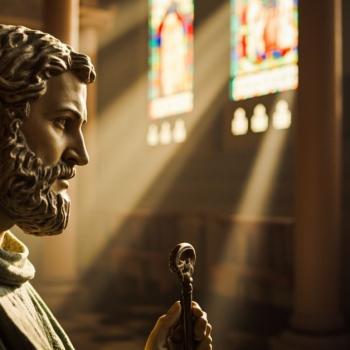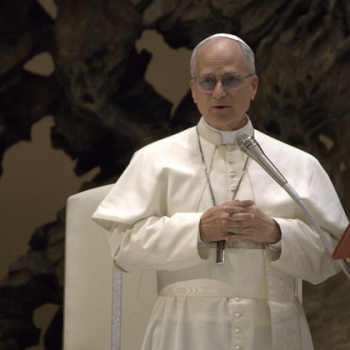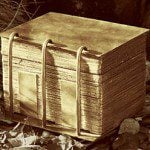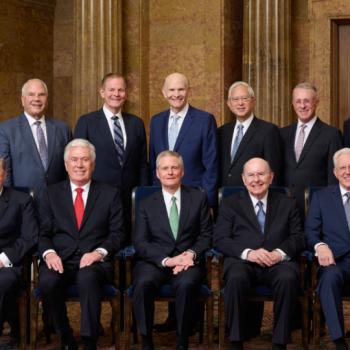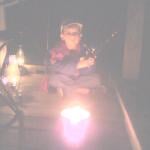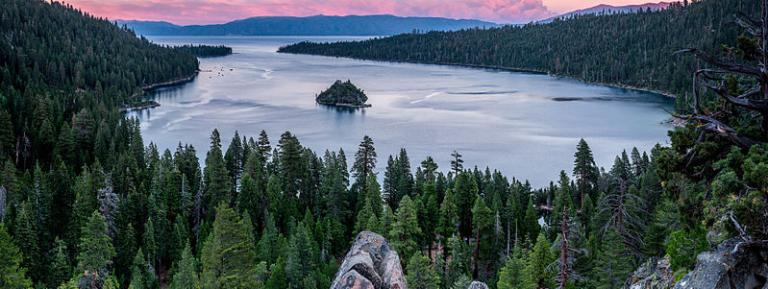
***
Today, a new article by Loren Blake Spendlove has appeared in Interpreter: A Journal of Latter-day Saint Faith and Scholarship:
“Mine House is a House of Zion and not a House of Babylon!”
Abstract: In Doctrine and Covenants 132:8 we read: “Behold, mine house is a house of order, saith the Lord God, and not a house of confusion.” I propose that the words “order” and “confusion” in this passage are literary allusions to the ideals, constructs, and outcomes that embody Zion and Babylon, respectively. In other words, God’s house is a house of Zion and not a house of Babylon.
I hope that you will enjoy it.
***
And, as I’ve lately been doing, I offer here a few links to some earlier articles in Interpreter:
Daniel C. Peterson, “Variety and Complexity in the Witnesses to the Book of Mormon”
Abstract: This paper examines the testimonies of the witnesses of the Book of Mormon— not only the Three Witnesses and the Eight Witnesses, but many others who experienced and testified of the reality of the Book of Mormon plates. Together, these testimonies offer impressive support for the claims of Joseph Smith regarding the Book of Mormon and, thus, the Restoration. The variety and complexity of their collective testimony makes finding a single, alternative, non-divine explanation for the witness experiences challenging, indeed.
[Editor’s Note: A very similar version of this essay was delivered as an address at the annual FairMormon Conference in August 2020.]
Clifford P. Jones, “That Which You Have Translated, Which You Have Retained”
Abstract: I propose that our current Words of Mormon in the Book of Mormon was originally a second chapter of the book of Mosiah following an initial chapter that was part of the lost 116 pages. When Joseph Smith gave the first 116 pages to Martin Harris, he may have retained a segment of the original manuscript that contained our Words of Mormon, consistent with the Lord’s reference “that which you have translated, which you have retained” (D&C 10:41). A comprehensive review of contextual information indicates that the chapter we call Words of Mormon may actually be the first part of this retained segment.
Robert Joseph, “The Lord Will Not Forget Them! Māori Seers and The Church of Jesus Christ of Latter-day Saints in Nineteenth-Century New Zealand”
Abstract: This essay demonstrates that the key prophetic matakite dreams and visions of at least the nine nineteenth-century East Coast Māori seers appear to have been (and should continue to be) fulfilled surprisingly by the coming of The Church of Jesus Christ of Latter-day Saints to New Zealand. There are lessons for current and future Latter-day Saint leaders and missionaries to reflect on this little-known history on the nineteenth-century Māori conversions to the restored Church.
[Editor’s Note: Part of our book chapter reprint series, this article is reprinted here as a service to the LDS community. Original pagination and page numbers have necessarily changed, otherwise the reprint has the same content as the original.
See Robert Joseph, “The Lord Will Not Forget Them! Māori Seers and The Church of Jesus Christ of Latter-day Saints in Nineteenth-Century New Zealand,” in Remembrance and Return: Essays in Honor of Louis C. Midgley, ed. Ted Vaggalis and Daniel C. Peterson (Orem, UT: The Interpreter Foundation; Salt Lake City: Eborn Books, 2021), 323–68. Further information at https://interpreterfoundation.org/books/remembrance-and-return/.]
Gregory L. Smith, “Feet of Clay: Queer Theory and the Church of Jesus Christ”
Review of Taylor G. Petrey, Tabernacles of Clay: Sexuality and Gender in Modern Mormonism (Chapel Hill, NC The University of North Carolina Press, 2020). 288 pages. $29.95 (paperback).
Abstract: Tabernacles of Clay examines the discourse of The Church of Jesus Christ of Latter-day Saints through a “queer theory” lens. This review examines its first two chapters’ use of sources regarding Church teachings about eternal biological sex and homosexual behavior. These chapters claim that the Church treated homosexual sin leniently and said little about such acts until the more “homophobic” 1950s. There are, in fact, many examples of homosexual behavior being condemned by Church leaders in the nineteenth and early twentieth centuries. Tabernacles further claims that in the 1950s–1970s, some in the Church saw biological sex as “created and contingent” — rather than eternal and unchanging — thus permitting a view of theological “gender fluidity.” The authors used to support these claims have been misrepresented and important information omitted. Tabernacles also fails to properly contextualize the sources and language of the 1950–1970s, and it thereby misrepresents Church discourse on homosexual sin. A thorough review of the Church’s official documents from this period reveals an almost exclusive focus on homosexual behavior, not homosexual temptation or identity. Aspects of present-day Church teaching or policy which are said to be novel are shown to be otherwise. The above errors lead to mischaracterization of Spencer W. Kimball’s book, The Miracle of Forgiveness. Tabernacles has not adequately or fairly characterized its sources, rendering its conclusions suspect.
David R. Seely and Jo Ann Seely, “The Crown of Creation”
Abstract: The Seelys discuss the well-known concept of the universe as a temple, and link the creation story to the temple drama. They explore how God, in creating the universe, had the same roles the temple drama gives to Adam and Eve as archetypes of each man and woman (that of king, priest, and artisan), and how man, by participating in the temple drama, is raised to be the image of God, thus becoming the real crown of creation, participating in God’s creation by procreation.
[Editor’s Note: Part of our book chapter reprint series, this article is reprinted here as a service to the LDS community. Original pagination and page numbers have necessarily changed, otherwise the reprint has the same content as the original.
See David Rolph and Jo Ann H. Seely, “The Crown of Creation,” in Temple Insights: Proceedings of the Interpreter Matthew B. Brown Memorial Conference, “The Temple on Mount Zion,” 22 September 2012, ed. William J. Hamblin and David Rolph Seely (Orem, UT: The Interpreter Foundation; Salt Lake City: Eborn Books, 2014), 11–24. Further information at https://interpreterfoundation.org/books/temple-insights/.]
Posted from Northstar, California




